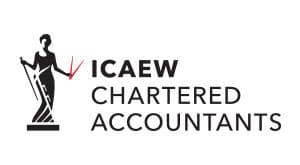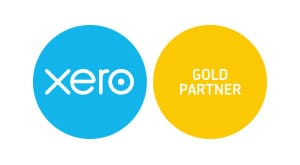HMRC has today updated its guidance on the grants available under the Coronavirus Job Retention Scheme (CJRS), confirming who is eligible and addressing specific questions raised since its announcement.
The grant is available to any entity with a UK payroll and a UK bank account, including individuals, businesses, charities, recruitment agencies and public authorities.
The online service through which claims will be made is expected to be available at the end of April 2020. The employer, not HMRC, will need to calculate the amount being claimed. It is not yet clear whether we, as an agent, will be able to apply on behalf of our clients.
The following information will be needed:
- ePAYE reference number
- the number of employees being furloughed
- the claim period (start and end date)
- amount claimed (per the minimum length of furloughing of 3 consecutive weeks)
- the relevant bank account number and sort code
- claimant’s contact name
- a contact phone number
After checking the claim, HMRC will pay it by BACS to a UK bank account.
The guidance states that HMRC will retain the right to audit retrospectively all aspects of the claim. HMRC will use the Real Time Information (RTI) system to do this. It is therefore important that records are retained to support any claim.
The employee must be paid all the grant received for their gross pay.
Timing of claims
The intention is that claims will be made either shortly before or as part of the normal payroll. Claims can be backdated to the 1st March 2020.
The grant will only accrue once the employee finishes work and starts furlough, not when the decision to furlough is made or when they are written to confirming their furloughed status. Grants will be prorated if the employee is only furloughed for part of a pay period.
The HMRC guidance notes that ‘if appropriate, workers’ wages should be reduced to 80% of their salary within your payroll before they are paid. This adjustment will not be made by HMRC’.
Salary on which claim is based
The grant is based on the lower of 80% of the monthly salary and £2,500, plus the associated employers NIC and pension contributions. For employees on a regular salary, 80% of the employee’s gross salary as at 28 February 2020 should be used.
For an employee who has been employed for more than 12 months, but whose pay varies, the higher of the following should be used:
- Same month’s earnings from the previous year
- Average monthly earnings for the tax year 2019/20.
For an employee who has been employed for less than 12 months, 80% of the average monthly earnings since they started work should be used.
If the employee only started in February 2020, their earnings to date should be pro rated and used as a base.
Employers can claim for any regular payments they are obliged to pay employees. This includes wages, past overtime, fees and compulsory commission payments. However, discretionary bonuses (including tips) and commission payments and non-cash payments should be excluded.
The reference salary should not include the cost of non-monetary benefits provided to employees, including taxable benefits in kind. Benefits provided through salary sacrifice, such as pension contributions, should not be included in the reference salary.
HMRC guidance makes it clear that where an employer provides benefits to furloughed employees, this should be in addition to the wages that must be paid under the terms of the Job Retention Scheme.
HMRC has also confirmed that COVID-19 counts as a life event for the purposes of an employee’s right to request changes to salary sacrifice arrangements, if the employment contract is updated accordingly.
Period of furlough and multiple jobs
Employees must be furloughed for a minimum period of 3 consecutive weeks. When they return to work, they must be taken off furlough. Employees can be furloughed multiple times, but each separate instance must be for a minimum period of 3 consecutive weeks.
Employees cannot work for the employer during the period of furlough leave. They can however work for a different and unconnected employer during this period. An employee with multiple employers can be furloughed by more than one at the same time and in that case, each employment can pay the worker up to the maximum £2,500 at the same time.
Employee rights
Employees still have the same rights at work, including:
- Statutory Sick Pay
- maternity and other parental rights
- rights against unfair dismissal
- redundancy payments
Grants cannot be used to substitute redundancy payments.
Tax consequences of the grant
The grant paid to the employer is included within the business’ taxable profits for income tax or corporation tax purposes. The gross salary and associated NIC and pension costs continue to be tax deductible in the usual way.
The employee is taxed on the salary paid by the employer as usual.
Company directors
The HMRC guidance confirms that directors, including those who are directors of their own personal service company, can be furloughed. The HMRC guidance reminds companies that:
‘Company directors owe duties to their company which are set out in the Companies Act 2006. Where a company (acting through its board of directors) considers that it is in compliance with the statutory duties of one or more of its individual salaried directors, the board can decide that such directors should be furloughed. Where one or more individual directors’ furlough is so decided by the board, this should be formally adopted as a decision of the company, noted in the company records and communicated in writing to the director(s) concerned.’
‘Where furloughed directors need to carry out particular duties to fulfil the statutory obligations they owe to their company, they may do so provided they do no more than would reasonably be judged necessary for that purpose, for instance, they should not do work of a kind they would carry out in normal circumstances to generate commercial revenue or provides services to or on behalf of their company.’
Other points of note
Employees who were made redundant on or after 28 February 2020 can be re-employed and furloughed.
A worker whose hours or pay have been reduced but who continues to work cannot be furloughed.
Foreign nationals can be furloughed.
An individual employing a nanny or other domestic employee can furlough them as long as they were employed and paid through PAYE on or before 28 February 2020.
A worker can undertake training as long as that training does not provide services to, or generate revenue for, their organisation. Workers can also take part in volunteer work.








 Production
Production
